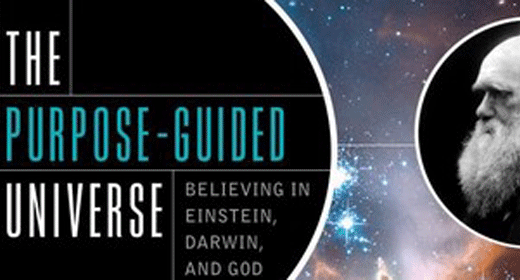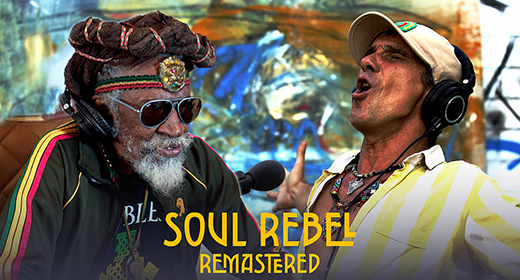An expert on aging thinks humans could live to be 1,000 years old—with a few tweaks to our genetic “software”
 by Bill Gifford: How long can human beings live? Although life expectancy has increased significantly over the past century, thanks largely to improved sanitation and medicine, research into hunter-gatherer populations suggests that individuals who escaped disease and violent deaths could live to about their seventh or eighth decade. This means our typical human life span may be static: around 70 years, with an extra decade or so for advanced medical care and cautious behavior. Some geneticists believe a hard limit of of around 115 years is essentially programmed into our genome by evolution.
by Bill Gifford: How long can human beings live? Although life expectancy has increased significantly over the past century, thanks largely to improved sanitation and medicine, research into hunter-gatherer populations suggests that individuals who escaped disease and violent deaths could live to about their seventh or eighth decade. This means our typical human life span may be static: around 70 years, with an extra decade or so for advanced medical care and cautious behavior. Some geneticists believe a hard limit of of around 115 years is essentially programmed into our genome by evolution.
Other scientists in the fast-moving field of aging research, or geroscience, think we can live much longer. A handful of compounds have been shown to lengthen the life spans of laboratory animals slightly, yet some scientists are more ambitious—a lot more ambitious.
João Pedro de Magalhães, a professor of molecular biogerontology at the Institute of Inflammation and Ageing at the University of Birmingham in England, thinks humans could live for 1,000 years. He has scrutinized the genomes of very long-lived animals such as the bowhead whale (which can reach 200 years) and the naked mole rat. His surprising conclusion: if we eliminated aging at the cellular level, humans could live for a millennium—and potentially as long as 20,000 years.
How can that be? If aging is programmed, scientists could theoretically reprogram our cells by tweaking genes that are central to aging. This would require technology that we don’t presently have, but Magalhães thinks it can be created. His great-grandfather died of pneumonia—a leading cause of mortality in the 1920s. When Magalhães contracted the same disease as a child, he was cured with a simple dose of penicillin. He thinks scientists can similarly develop therapies for aging, an endeavor to which he has now devoted his career. “I want to cheat death,” he says bluntly.
How has cheating death worked out so far?
I don’t think we’re going to have a drug that “cures” aging the way penicillin cures infections anytime soon. But a compound called rapamycin is quite promising. It extends life span by 10 to 15 percent in animals, and it is approved for human use, such as for organ transplant recipients. It does have side effects. I am optimistic that we will develop drugs akin to statins [taken daily to lessen risk of heart disease] that we take every day for longevity purposes. If you could slow down human aging 10 or even 5 percent, that would still be pretty amazing.
How does rapamycin work?
Rapamycin does quite a number of things in the cell, but a lot of its effects [involve] slowing down growth and slowing down cell metabolism, which is why it has an impact on aging.
Your grandmother lived to be 103 years old. Did she take rapamycin, or was her long life linked to something else?
I think it was the sun and the beach [laughs]. We know that to become a centenarian is mostly genetic. My grandmother didn’t really exercise, and she didn’t eat very healthily. She didn’t smoke; she didn’t have very bad habits, but she also didn’t have particularly healthy habits. Yet she was quite healthy almost until the end—she was barely in hospital. With her it came down to genetics, environment and some luck.
You’ve sequenced genomes of very long-lived animals such as the bowhead whale, which lives up to 200 years. How are their genes different from ours, and what can we learn from them?
Various long-lived animals, such as humans, whales and elephants, all have to cope with the same issues, such as cancer, but they use different molecular tricks to achieve their longevity. With bowhead whales, they seem to have much better DNA repair. My dream experiment is to take a bowhead whale gene and implant it in a mouse to see if the mouse would then live longer. Another obvious example would be the p53 gene, which is very strongly associated with cancer suppression. Elephants have multiple copies of this gene, which makes them resistant to cancer. There are a few other candidate genes that we’ve discovered, not only in whales but in rodents such as the naked mole rat.
Why are naked mole rats so interesting?
Naked mole rats are fascinating because they can live up to 30 years, yet they are smaller than a rat, which only lives to about four years. So you have a small rodent that’s related to mice and rats but lives much longer and is very cancer-resistant.
What’s their secret?
In terms of cancer resistance and probably overall aging as well, it’s their ability to respond to and repair DNA damage. But the threshold for a mouse cell to become a cancer cell is much lower than [the threshold] in humans. If you expose mouse cells to DNA damage, they will get cancer; if you expose naked mole rat cells to the same damage, it’s going to be fixed. They won’t get cancer.
So if mice live several years, and naked mole rats live 30 years, and we live about 80 years, does that mean life spans are genetically programmed?
The dominant theory of aging was about wear and tear—damage accumulating in our cells and components of our body like cars that break down over time. I’ve never really liked that because humans are not inanimate objects. There is damage, of course, and often aging seems to be very deterministic, almost like a program. A mouse will age 20 to 30 times faster than a human being. There are a lot of aging [characteristics] that just happen to everybody and even across species, such as loss of muscle mass. This doesn’t seem like something that’s random; it seems predetermined. So I think of aging as more akin to a software problem than a hardware problem.
My hypothesis is that we have a very complicated set of computerlike programs in our DNA that turn us into an adult human being. But maybe some of these same programs, as they continue into later life, become detrimental.
What’s an example of that?
A classic example would be thymus involution. Your thymus is a gland that produces T cells, which are very important to your immune system. But it disappears fairly early in life, around age 20—earlier if you’re obese; later if you’re an athlete. Basically it turns into fat. That strikes me as very programmatic. It’s a classic case of antagonistic pleiotropy, where a process that is beneficial earlier in life becomes harmful later on.
Why is the immune system important in aging?
The immune system, I think, is a low-hanging fruit in terms of targeting aging. It has systemic impacts, and it declines over time, which is why diseases like COVID become very dangerous to old people. But there are specific tissues, such as the thymus, that you can target for rejuvenation. To me, that’s one way of starting. There are experiments in mice that show that if you change just one transcription factor [a protein that acts on genetic material], the thymus regenerates. In theory, I am convinced we can have radical interventions like this—to rewrite our genetic “software” and redesign human biology—to delay or even reverse aging. In practice, it is difficult, but in theory, I think there’s a huge potential.
How much potential is there? How long could we live if we got rid of aging?
I actually did some calculations years ago and found that if we could “cure” human aging, average human life span would be more than 1,000 years. Maximum life span, barring accidents and violent death, could be as long as 20,000 years. This may sound like a lot, but some species can already live hundreds of years—and in some cases thousands of years [such as the hexactinellid sponge and the Great Basin bristlecone pine]. If we could redesign our biology to eliminate cancer and evade the detrimental actions of our genetic software program, the health benefits would be mind-boggling.
This sounds extreme. Are such profound interventions even possible?
I think it’s possible. Is it going to happen soon? I think it’s quite unlikely. Even if you can figure out how aging works, it is not easy to develop interventions. I am an aspiring science-fiction writer as well, and one thing I’ve noticed are these novels that are set 100 or 1,000 years from now, in a future with all kinds of technology that enables people to do incredible things, such as travel between stars—and people are still aging. But I think we’ll figure out aging by then.
ABOUT THE AUTHOR

Bill Gifford is co-author of the New York Times bestseller Outlive: The Science & Art of Longevity. He ages in Salt Lake City, Utah









































